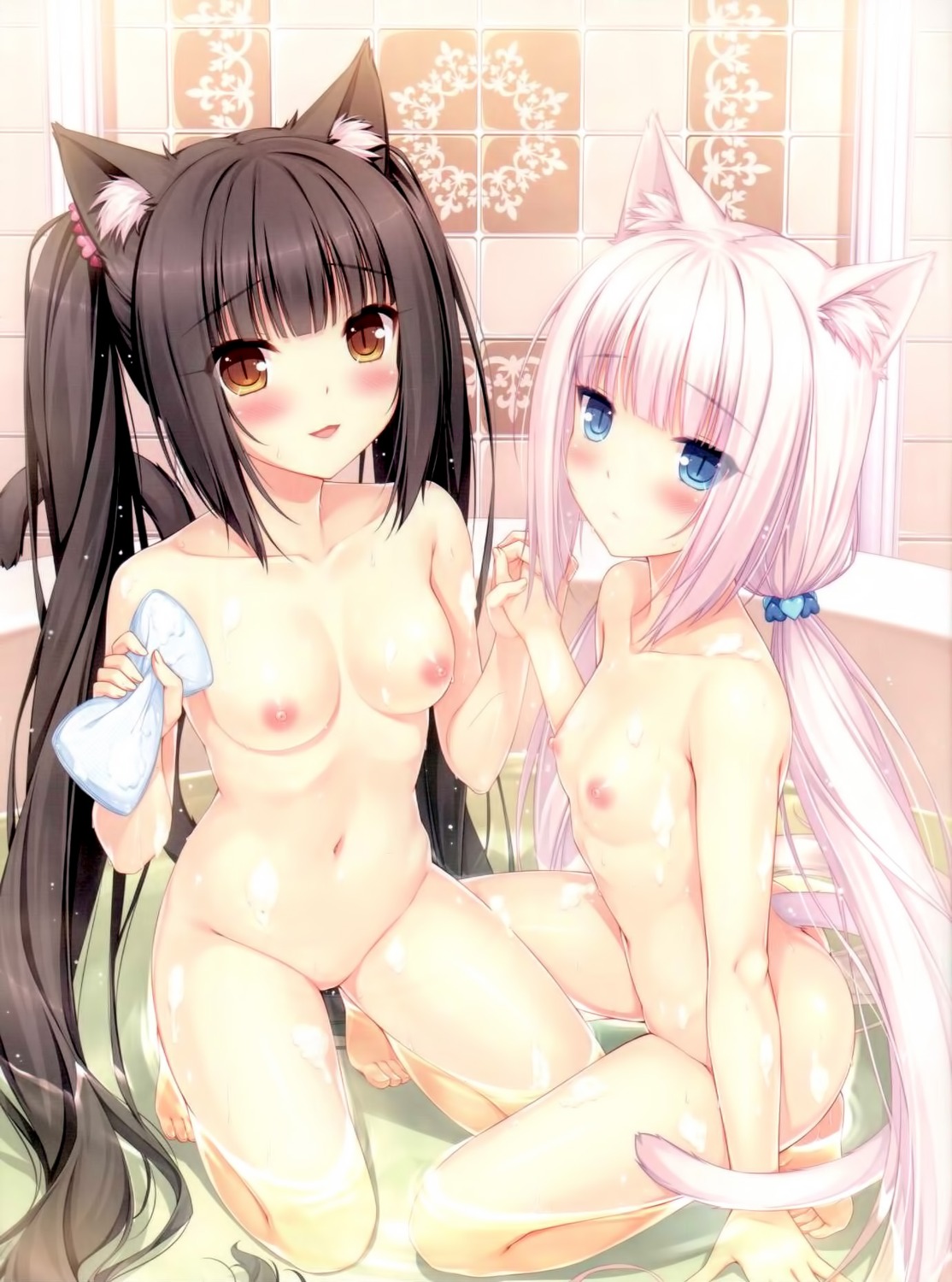This image has been resized. Click on the View larger version link in the sidebar for a high-quality version.
Hide this message.
Image samples have been disabled. If you find this to be too slow, you can turn samples back on in your profile settings.
« Previous Next » This post is #9 in the Neko Works (Sayori) - Neko Para 01 pool.
Search
Tags
- ? neko works 555
- ? sayori 1052
- ? nekopara 586
- ? chocola 383
- ? vanilla 390
- ? animal ears 160640
- ? bathing 7483
- ? loli 55772
- ? naked 91528
- ? nekomimi 43456
- ? nipples 192565
- ? tail 105739
- ? jpeg artifacts 5935 nude cat ears bath catgirl shower jpegartifacts jpeg artifact jpegartifact nekoworks nipple jpeg nezumimi nezumimimi neko para chocolat fox ears loli nude kitsunemimi animal tail cat tail butt plug tail anal tail completely nude nude female inverted nipple animal ear puffy nipples bunny tail casual nudity monkey tail monkey ears dragon tail
Statistics
- Id: 265899
- Posted: over 11 years ago by Radioactive
- Size: 1380x1858
- Rating: Questionable
- Score: 511
- Favorited by: sailorxxvx, rAlpha26, justdielol, bombazi196, Newjin, fuze35, 734879, digitalboy_030, senko-san01, Shisk, t3486784401, Hshcrve, Thid, enzomtp, yuu_chan, geass702, Mudou, mouse3711, benjiho, VyacheslavS, Bw816721, lynngratinar, Maverick22222, TheMan7658, ilicklolianus, 高坂, ioklkiol, wxmzm, YameteSenpai, no!, zoldor, mmngg, QuillenHo, Alin250_Gaming, Jovictor, 猎狐逍遥, kullikikkeli, Kota_tachiecowa, 1695474977, Jennyclarke37, dark_fantasty_, wsensei, 1097242897, 6969, frostfire, speed1, Marock, intensez, RemIzuna, xunji, TotallyLegit-_-, unknown171, Durptea, degamerde, kokottupy, Despacito2confirmed, Downloader-006-, xjack, Nekichi, yunlan, Kasuyi, Qwenteen74, rollorollo, Jocu13, Jusky, AnimeFan18, 0858050376, shippu, 新津天皇, coldbreath410, kianasama, KittyCat2, jacklo, Count_Wrauzar, PClaudis, Pandabear011, anhuoheiyan, uncard86, Cherrys, Destructodoom, r0dr0, guy2, Kuaikuai27, TriGeox, Excentricitet, dopara, 水A幻, freshfish, elisein, makeboi, sunny61088, bananamath, lolisugar, bhpp, Pondicek, zznc, Yes🐵Monkey, AntiAccess, Porsche_Spark, adeemo, marioalanis, 鞋垫, weiduhuo, murkyrickwubadub, yinghua, LoliSquare, SrMiles, Plasticwind, eventore, naljsh, spdrggs, Levi345, Mimic1, thirteenYandere, CountRidiculous, jjme, qwasdf, sorazys, chin7777777, HanQiqi, swrine, aikaimolie, jsanchezflores13, RUO, npj, Melodict, MarsSider, 秋月愛莉, porgy, AlXenos, roh, 2012392256, fireattack, Spidey, tsu168, Alupigus44, galapin, infernic, SuryaSaputra, octans, iloveecchihentai, kyaa123, shnam1201, youkengi, cosmix, x85434288, joker一冥, Krunnel, 3189753307, QY1224, Ayanoreku, gauh, 3150883595, ch262, WizardSensei, 2972394576, Nico-NicoO.M., 黑助, qwerty44, Equal, COMETOSEE, ghostpain, Chris_Cornell, llIRaveNlll, Sergiohidalgof, zhaoyao1, CazetteS, TP1, ryuokyo06, wqguogryxj, aaaaa, Watchkitty, Bobo12345, Veta91, chunchunyushui, Kurudowell, kyonre, 董梓聪, kuronekodafirenze, 1372594126, LINXIWUYUAN, whysoweak, DeadDragon43, reanaara, shylissir, Quantalex, Rhenk, ziuvjing, RitoChan, oliverz, Thorcsf, akagiss, PLCengineer, Windows7, InformationHigh, moenayuki, BOA94, mjwright, qingxinyuyue, Kirey20, Ariae, anzuchang!, hoshinokaito, Zethick, MGR, hifly, 3dhgame, a307670, Crazyllk, yuuki.rito, 華鳥風月丨喩, AbsoluteEcho, TrombGear, DarrenS, Gilgamesh51, kibbin, kibounoki, Lamii, Ranse, Yurako, Slacker, AspenExcel, aaqq1144, Jezh, fdsert, ERGE, KN33S0XXX, 956356679, tirader, Xerneas26, 玉城天真, victor19940828, Killerboyp, Animextremist, 坠落, qaz1wsx2edc3, Jacklewis97, iaj123, Hyper_187, n00ki3, Gentleman, Arisha, twlight47, ltdhz, Chowder920, andrewandrew, yuzuru_5, longwise, Xunar, qaz123mly, omoti, ragnarok24, Kyco4ek3JIa, eumesmo, hitaezy, mrjailbait, nandebro, gilgamesh1991, takeshinakai, goeff_teh_wahle, goddio, s940416, AlexandraHallowerII, KseRz, rentan, bnbyo, yuuki691, shiliuyexingzi, kic990, gleevenlord, mancer1984, l1132021548, Dimitrij, stealthysenpai, 梦之森, darkdream, Shadow_acg, RokuKyu, G3R4RD0, ll123456, Knives663, devilcore, 爱乳之名, Vepter, fsh5678, LucasXX, bakaren, Shinyakogami, bob117, koko949631, maxi99, rainhearth, tigervoid, ting9661077, mikudayo, diyuel, xfirered, mzlks, RdnBgn, kagefks, Invisibro1, callboy12, you_are_awesome2, DollDrawing, furyeagle, N0ctis, xpq, WhiteShadow, fga5g4f, Spartan45, mossad10086, nozomu, angel_adaoin, sorsujpbf4, sbkjsop, tomix, ♥EmmyMilMil♥, Sol_Requiem, bluswang, apc521, BR4NagiLover, www5k, cordobandres, omgitsbothscarab86, xfireredx, kran, daderpy, 906476903, matthewduy, PantyEnthusiast, nanaya7, Relow, YukiYoshie, wxw7251314, nathh, WAX360511, Lumishare, adfox, mkkoto, vreatinve, loveharuhi, kulio321, victorhuy, poehalcho, matcom, hinemosu99, retareta, oomoom, JCorange, atttta, Yincus, yurikun, ctrl450, Qpax, Makaila, o0lijunyi0o, Rambo99, dorifto30, HaCkY, a014789, ryuuseiz, Mous, ryusa_works, 曦,月, 1066115853, Azarel, yangheli22, captainwoodroe, bb2, holyham, cowdrunk, Esuto, yanbs1, ao_no_exo, Lemoe, amonrei, Patrick_Bateman, sarato, Febdash, valkyrie-silmeria, maxthe888, miaotou, gouki02, nooanianqueetus, melt, felix430, z3351979, grant, gannster, bakkou, Pippin, renrew, rockon12, makiechang, 紫幽恋, airei, kami丨angel, Filip6666, fallendeva, strezzel, cmc0713, zjy5713, mangaman2, soulsamurai3222, AtomBot, EchelonV, SeeThrough, moqtar, Shirotsume, Buford, baluce, Southzerk, zspazm, johnbelmont, ipopocandy, hse400, Elow69, match, daedalus25, vatar17, pere, qaz110wsx110, Kalessin, Tonfish, LS1088, ethane, einishi, alma79, alevezzali, LimitedDaily, soddein, Packaged, CWC, tangerineCC, Destruckdo, marvell, BlackDragon2, vita, VanWilder, Unctuous, gibwar, TheSteamyAuthor, omygo, mootykins, wrt5544gg, 01234, karas100, dragoncaliber, cgcat, Atrum-Tempestas, ZenethZero, kaelsmith (446 more)


Nepcoheart
over 6 years agomoonian
over 6 years agoTheUnspoken
over 6 years agoTaruby
over 4 years agoThe issue with Loli is that in Japan it's become a blanket term for anything underage, and in terms of manga and anime, it's the word they used that's synonymous with the word 'Bishoujo' (a specific kind of art style). A perfect example of this is the anime 'Dream Dimension Hunter Fandora', which was created because Go Nagai wanted to create a Lolicon Anime back in the 1980s when this style of art was at its most popular. Anyone looking at the design of Fandora nowadays would conclude it looks like a 'normal' anime, and that's because what westerners assume to be 'normal' anime is in actuality Lolicon anime in Japan. Personally, I thought there was a shift from the usage of the classical definition of Lolita which is an underage teenage girl with a voluptuous body to the more recent archetype among younger Japanese internet users, with Bishoujo and Moe replacing the definition of Lolicon, but upon delving into the 1990s and 2000s Comiket and Doujin scene, the word Lolita has consistently been used to describe characters with the body-type of Lum from Urusei Yatsura, so the problem is when and why the west formed a completely different definition than that of Japan.